2) Southern Methodist 12-1
3) Princeton 9-0
4) Texas Christian 12-1
5) Ohio State 7-1
6) Stanford 8-1
7) Louisiana State 9-2
8) Notre Dame 7-1-1
9) California 9-1
10) Pittsburgh 7-1-2
11) Fordham 6-1-2
12) North Carolina 8-1
13) Duke 8-2
14) Holy Cross 9-0-1
15) Auburn 8-2
16) Northwestern 4-3-1
17) Alabama 6-2-1
18) Army 6-2-1
Iowa 4-2-2
UCLA 8-2
21) Nebraska 6-2-1
Ohio 8-0
Marquette 7-2
Washington 5-3
St. Mary's (California) 5-2-2
26) Temple 7-3
Dartmouth 8-2
New York 7-1
For the rest of the top 25 rankings 1901-1934, I am going to logically repair a hypothetical AP poll's top 25. In other words, for each season I am going to start with where an AP poll would have approximately rated teams, based on my research of writers from the time, then fix any ratings that would be illogical in the same way that I fixed all the actual AP polls.
However, this season I am going to do something a little different, because while there wasn't yet an Associated Press college football poll to fix, there was still a poll of college football writers this season, conducted by United Press International. An AP poll's pool of writers may not have come to the exact same ratings as the UPI poll's writers did, but I assume that they wouldn't have been that different. I mean, sportswriters are sportswriters, right?
As such, for this season's top 25 I will merely fix the UPI poll's rankings the same way I would fix an AP poll. I go into more detail on the top teams in this fixed poll, particularly Minnesota, Stanford, and Princeton, in my article on the 1935 national championship.
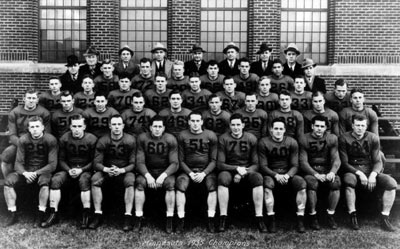
Minnesota's 1935 football team. This was the 2nd of 3 straight national championships for Minnesota, the last time any team has "threepeated." Of course, it is much harder to do today than it was back then. Minnesota did not have to play in bowl games in the 1930s, so they played 1 top 25 caliber team in 1934, 3 this year (but none in the top 10), and 3 in 1936 (losing one of those). If they had had to play the toughest remaining challenger in a BCS type game each season, it is unlikely that they would have won out all 3 years.

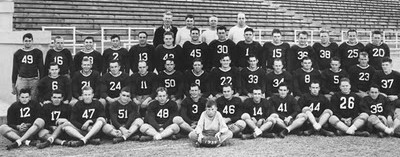
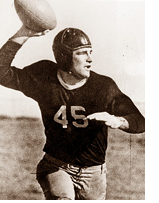 When
10-0 Southern Methodist (pictured above) met 10-0 Texas Christian on
November 30th, Fort Worth was the center of the college football
universe, with the nation's top writers coming to town to cover it. At
stake was the SWC title and a slot in the Rose Bowl, as well as a shot
at a share of the mythical national championship (MNC). SMU featured a
pair of consensus All Americans, halfback Bobby Wilson and guard J. C.
Wetsel, as well as nonconsensus AA tackle Truman Spain. TCU countered
with consensus AA center Darrell Lester and nonconsensus AA quarterback
Slingin' Sammy Baugh, a college and pro Hall of Famer (Baugh pictured
at left). Writer Grantland Rice called this clash the "Game of the
Century," a term that had first been used just a few weeks earlier for
the Ohio State-Notre Dame game. 37,000 attended.
When
10-0 Southern Methodist (pictured above) met 10-0 Texas Christian on
November 30th, Fort Worth was the center of the college football
universe, with the nation's top writers coming to town to cover it. At
stake was the SWC title and a slot in the Rose Bowl, as well as a shot
at a share of the mythical national championship (MNC). SMU featured a
pair of consensus All Americans, halfback Bobby Wilson and guard J. C.
Wetsel, as well as nonconsensus AA tackle Truman Spain. TCU countered
with consensus AA center Darrell Lester and nonconsensus AA quarterback
Slingin' Sammy Baugh, a college and pro Hall of Famer (Baugh pictured
at left). Writer Grantland Rice called this clash the "Game of the
Century," a term that had first been used just a few weeks earlier for
the Ohio State-Notre Dame game. 37,000 attended.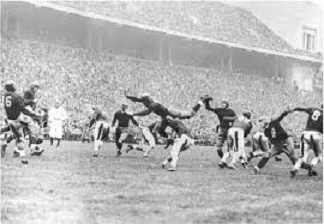
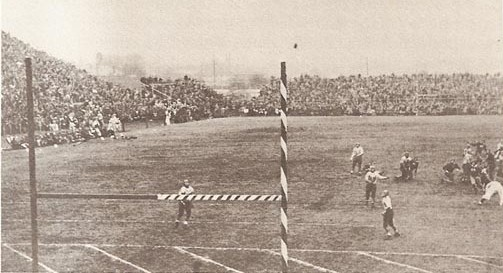
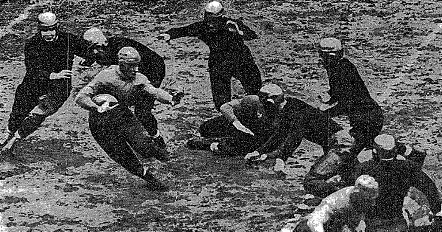
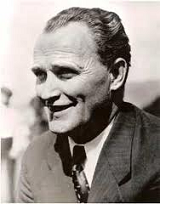 Fordham,
on the other hand, doesn't have a good reason to be rated ahead of St.
Mary's. Fordham lost 20-0 at home to unrated 4-4 Purdue, a simply
terrible result. They had 2 close wins over unrated opponents, a 14-7
decision over Franklin & Marshall being the worst, while St. Mary's
brought home all 5 of their wins by more than a touchdown, and all in
shutouts. Fordham was also the home team in all of their games but one,
a neutral site bout with NYU, while St. Mary's played 4 road games,
including the big tie at Fordham. So we'll move St. Mary's all the way
up ahead of Fordham.
Fordham,
on the other hand, doesn't have a good reason to be rated ahead of St.
Mary's. Fordham lost 20-0 at home to unrated 4-4 Purdue, a simply
terrible result. They had 2 close wins over unrated opponents, a 14-7
decision over Franklin & Marshall being the worst, while St. Mary's
brought home all 5 of their wins by more than a touchdown, and all in
shutouts. Fordham was also the home team in all of their games but one,
a neutral site bout with NYU, while St. Mary's played 4 road games,
including the big tie at Fordham. So we'll move St. Mary's all the way
up ahead of Fordham.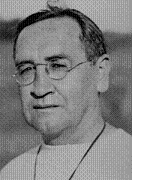 Marquette
was a mid-major team that played 5 major opponents and 1 fellow
mid-major, so they too played a schedule well beyond that played by
Ohio (1 major opponent, 7 minor). However, Ohio did go 8-0, and since
this is slot #25 we're talking about, I'm going to wimp out and let the
UPI poll have its token minor team, albeit in a tie with Marquette for
#25.
Marquette
was a mid-major team that played 5 major opponents and 1 fellow
mid-major, so they too played a schedule well beyond that played by
Ohio (1 major opponent, 7 minor). However, Ohio did go 8-0, and since
this is slot #25 we're talking about, I'm going to wimp out and let the
UPI poll have its token minor team, albeit in a tie with Marquette for
#25.